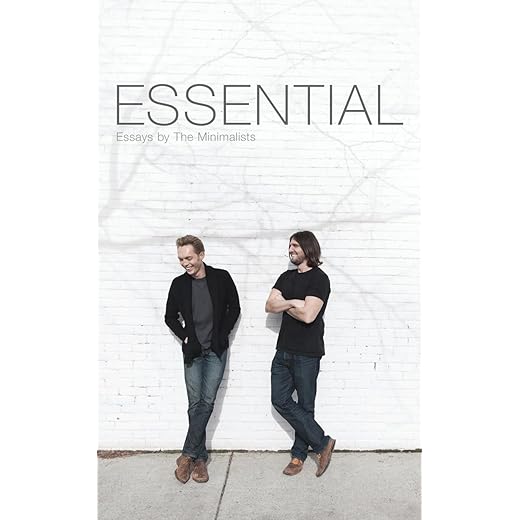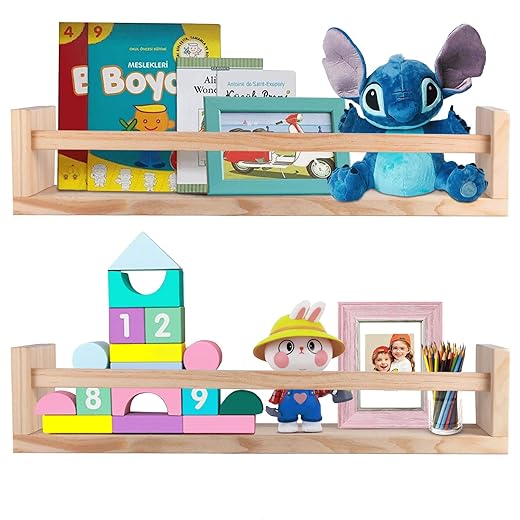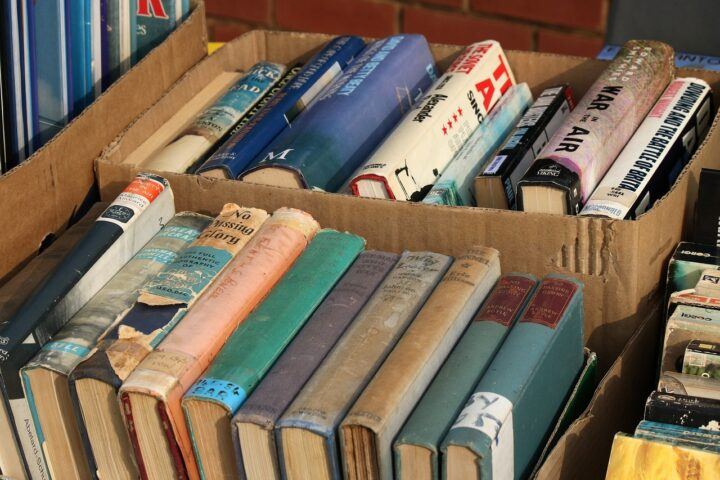The purpose of this step-by-step guide is to help individuals who are interested in maintaining a minimalist book collection declutter and remove unnecessary books. By following this guide, you will be able to create an essential minimalist book collection that is curated and reflective of your interests and values. The steps provided will guide you through the process of assessing your current collection, determining which books to keep or remove, and organizing your collection in a way that promotes simplicity and intentionality.
Top-selling Books for Minimalism



Assess your current book collection
Start by evaluating your current collection of books. Take some time to go through each book and assess its value to you. Consider factors such as relevance, sentimental value, and practicality. Here’s a step-by-step guide on how to assess your current book collection:
- Sort your books: Start by gathering all your books in one place. Sort them into different categories, such as fiction, non-fiction, reference books, and so on. This will help you see the size and scope of your collection.
- Determine relevance: Look at each book and ask yourself if it is still relevant to your interests and goals. Consider if you are likely to read it again or if it provides useful information for your current needs. For example, if you have a book on gardening, but you no longer have a garden, it might be unnecessary for your minimalist collection.
- Evaluate sentimental value: Some books hold sentimental value, such as those given as gifts or associated with important memories. Consider if the sentimental value outweighs the practicality of keeping the book. For example, a book passed down from a loved one might hold sentimental value that justifies keeping it, even if you don’t plan to read it again.
- Assess practicality: Think about the practicality of each book. Will you realistically read it again? Does it serve a purpose in your life? If a book is unlikely to be read or used in the foreseeable future, it may be unnecessary to keep it in your minimalist collection.
- Decide on essential books: After evaluating each book, determine which ones are essential to your minimalist collection. These are the books that align with your current interests, goals, and practical needs. They should be books that you genuinely enjoy and are likely to read or reference in the future.
By following these steps and considering factors such as relevance, sentimental value, and practicality, you can assess your current book collection and determine which books are essential to your minimalist lifestyle. Remember, the goal is to create a collection that brings you joy and serves a purpose in your life.



Sort your books into categories
To effectively organize your book collection, it is essential to create categories based on their genre, topic, or purpose. This will not only help you keep track of your books but also enable you to identify which ones you want to keep and which ones you may want to remove.
To begin the process, follow these simple steps:
- Assess your collection: Start by gathering all your books in one place. This will give you a clear idea of the size of your collection and allow you to identify any duplicates or books you no longer need.
- Choose your categories: Think about the different genres, topics, or purposes of your books. Common categories include fiction, non-fiction, science fiction, fantasy, self-help, biographies, and textbooks. Consider what categories make the most sense for your collection.
- Sort your books: Begin by picking up one book at a time and assigning it to a category. For example, if you have a book about history, place it in the non-fiction or history category. If you have a novel, categorize it under fiction. Continue this process until all your books are sorted into their respective categories.
- Label and organize: Once your books are sorted, label each category with clear and legible tags or sticky notes. This will make it easier to find books within each category. Next, determine the most suitable method for organizing your books within each category. You can arrange them alphabetically by author, title, or by publication date.
- Review and refine: Regularly review your categories and make adjustments as needed. As your collection grows, you may need to create new categories or merge existing ones. This ongoing process will ensure your collection remains organized and easy to navigate.
Remember, the key to successfully sorting your books into categories is consistency. Stick to your chosen system and maintain it over time. By doing so, you’ll not only create a visually appealing bookshelf but also have a hassle-free experience when searching for a specific book or genre.



Set criteria for keeping books
Establishing criteria for deciding which books to keep is an essential step in organizing your book collection. To begin, assess whether each book has been read or not. Ask yourself if you have already read the book or if you are likely to read it in the future. If you have no intention of reading the book or if you have already read it and don’t plan on revisiting it, consider letting it go.
Next, evaluate if the book holds significant value or meaning to you. Assess whether it has sentimental value, such as being a gift from a loved one or a rare edition that you treasure. If the book has a special place in your heart or represents an important memory, it may be worth keeping.
Furthermore, consider if the book aligns with your current interests and goals. If you have shifted your focus or have specific areas of interest you want to prioritize, it is important to keep books that support those interests. Reflect on whether the book will contribute to your personal growth, professional development, or align with your current hobbies.
By carefully considering factors such as whether the book has been read, its significance, and its alignment with your interests and goals, you can establish effective criteria for deciding which books to keep. This process will help you create a curated collection that reflects your personal taste and serves as a valuable resource in the future.



Donate or sell unwanted books
To donate or sell your unwanted books, first, gather all the books you no longer need. Next, consider donating them to libraries, schools, or charitable organizations. Many of these institutions are always looking to expand their collections and would greatly appreciate your contribution. Simply reach out to them and inquire about their donation process.
If you prefer to recoup some of the costs, you can sell your books online or at second-hand bookstores. Online platforms like eBay, Amazon, or Bookfinder allow you to list your books for sale to a wide audience. Provide accurate descriptions and appealing photos to attract potential buyers. Additionally, you can visit local second-hand bookstores and inquire about their buying policies. Prepare a list of the books you wish to sell and bring them to the store for evaluation.
Remember, donating or selling your unwanted books not only helps free up space in your home but also gives others the opportunity to enjoy and learn from them.



Create a minimalist bookshelf
Designating a specific area or shelf for displaying your essential book collection is the first step in creating a minimalist bookshelf. Start by selecting a shelf or an area in your home that you want to dedicate solely to your books. This could be a built-in bookshelf, a floating shelf, or even a designated space on a wall.
Once you have chosen the location, it’s time to arrange your books in a visually pleasing manner. Consider factors such as color, size, and theme when organizing your collection. Group books of a similar color together to create a cohesive and aesthetically pleasing look. Arrange books in a way that creates an interesting visual flow, such as alternating vertical and horizontal orientations or creating different heights within the shelf. You can also organize books by size, placing larger books on the bottom and smaller ones on top. If you have books with a specific theme, consider grouping them together to create a visually cohesive section.
Remember, the goal is to create a minimalist and visually pleasing bookshelf, so avoid overcrowding the space. Leave some empty space between books to give the shelf a clean and uncluttered appearance. By following these simple steps, you can create a minimalist bookshelf that not only showcases your essential book collection but also adds a touch of style to your space.


Digitalize your collection
Consider digitizing your books by using e-readers or digital book apps. This will help save physical space while still allowing you to access your favorite books. One option is to purchase an e-reader device, such as a Kindle or Nook, which allows you to download and store a vast collection of books in one compact device. To start, research and choose an e-reader that suits your preferences and budget. Next, set up your e-reader by following the manufacturer’s instructions, which typically involve connecting to Wi-Fi and creating an account. Once your device is ready, you can browse online bookstores, purchase e-books, and download them directly onto your e-reader. This way, you can carry hundreds or even thousands of books with you wherever you go, without the need for physical copies.
Alternatively, if you prefer using your smartphone or tablet, you can explore digital book apps like Kindle, Apple Books, or Google Play Books. These apps allow you to access a wide range of e-books directly on your mobile device. To get started, download the app of your choice from your device’s app store. Once installed, open the app and sign in or create an account if required. You can then browse through the available e-books, often divided into various genres or categories. When you find a book you’d like to read, simply tap on it to purchase or borrow it digitally. The book will be stored in your app’s library, accessible with just a few taps. With these digital book apps, you can build your own virtual library and enjoy reading on the go, without the need to carry physical books.
Remember, both e-readers and digital book apps offer features like adjustable font sizes, adjustable screen brightness, and the ability to highlight text or add bookmarks. So, whether you choose an e-reader or a digital book app, digitizing your collection will help save space, make it easier to carry your books, and provide a convenient way to access your favorite reads anytime and anywhere.
Maintain a clutter-free collection
Regularly review your book collection and ensure that it remains clutter-free. Begin by setting aside some time to go through your collection and carefully evaluate each book. Ask yourself if the book still holds value for you and if it aligns with your minimalist goals. If you haven’t read it in a long time or have no intention of reading it again, consider letting it go.
To maintain a clutter-free collection, continuously evaluate new additions. Before purchasing or accepting new books, think about whether they truly add value to your collection. Consider if they align with your current interests and if they will be actively used or enjoyed. It’s important to be intentional with your choices to prevent unnecessary accumulation in the future.
Lastly, be proactive in removing books that no longer align with your minimalist goals. As you come across books that no longer serve a purpose, don’t hesitate to let them go. You can donate them to a local library, sell them, or give them to someone who would appreciate them. By regularly reviewing your collection and removing books that no longer hold value, you can maintain a clutter-free and intentional library that reflects your minimalist lifestyle.
Key Takeaways
In conclusion, decluttering and removing unnecessary books from a minimalist collection can be a liberating and rewarding process. By following the steps outlined in this guide, you can effectively downsize your book collection and create a more organized and intentional space. Remember to assess your attachment to each book, prioritize the ones that bring you joy and value, and consider alternative ways to enjoy and share your books, such as donating or selling them. Embrace the minimalist mindset and enjoy the benefits of a clutter-free environment that allows you to focus on the books that truly matter to you.

